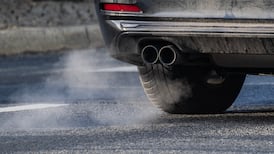Five months after Italy took the draconian step of imposing a national quarantine in response to surging Covid-19 case numbers in the north of the country, the world has learned enough about the virus to know how to stop it in its tracks. It has been well established that physical distancing, good hand-hygiene, mask-wearing and the avoidance of crowded places together can break the chain of transmission.
If those modifications of individual behaviour are the first line of defence, the second is the panoply of diagnostic and preventative public health measures that states can implement, chief among them a fast and responsive system for testing suspected cases and tracing the contacts of confirmed carriers.
But knowing what works does not in itself guarantee success. Proof of that is to be found in the rising numbers of cases across Europe, where a relative lull in transmission rates since mid-June has given way to a resurgence. Countries that were badly hit in the first phase, including Spain, Belgium and England, are having to impose localised lockdowns. Even countries that succeeded in containing the virus earlier in the year, such as Poland, are now battling to keep it suppressed.
Like a multi-headed hydra, the virus is crushed in one place only to arise someplace else. This is likely to be the pattern for the foreseeable future, with local outbreaks requiring targeted, short-term restrictions while states scramble to limit their spread. Progress will not be linear; there will be setbacks and defeats.
Complacency is Covid-19's best friend. Neither the State nor the people can afford to drop their guard
It may be little comfort to people in Kildare, Laois or Offaly, but the Government here, like its counterparts across Europe, has to weigh the social and economic costs of regional restrictions against the potential, and much larger, impact on the health service and the economy at a national level in the event of uncontrolled transmission.
The outbreaks in the midlands have pushed Ireland’s Covid-19 incidence to 16.9 cases per 100,000 of population. In early July it was at just 2.9 cases per 100,000. That measure is dubious; it is susceptible to dramatic shifts in small countries where overall case numbers are low. It’s also reassuring that the hospitalisation rate has so far remained relatively low. But complacency is Covid-19’s best friend. Neither the State nor the people can afford to drop their guard. It is essential that we learn from each outbreak – in this case, about the elevated risks at meat plants and ways to mitigate those risks – and ensure that we apply those lessons.
Many of us have invested all our hopes in the prospect of a vaccine that would rid the world of Covid-19. A more prosaic but realistic scenario is that the virus will ultimately be tamed not by a single scientific breakthrough but by constant if often imperfect improvisation based on the slow, methodical accretion of knowledge.











